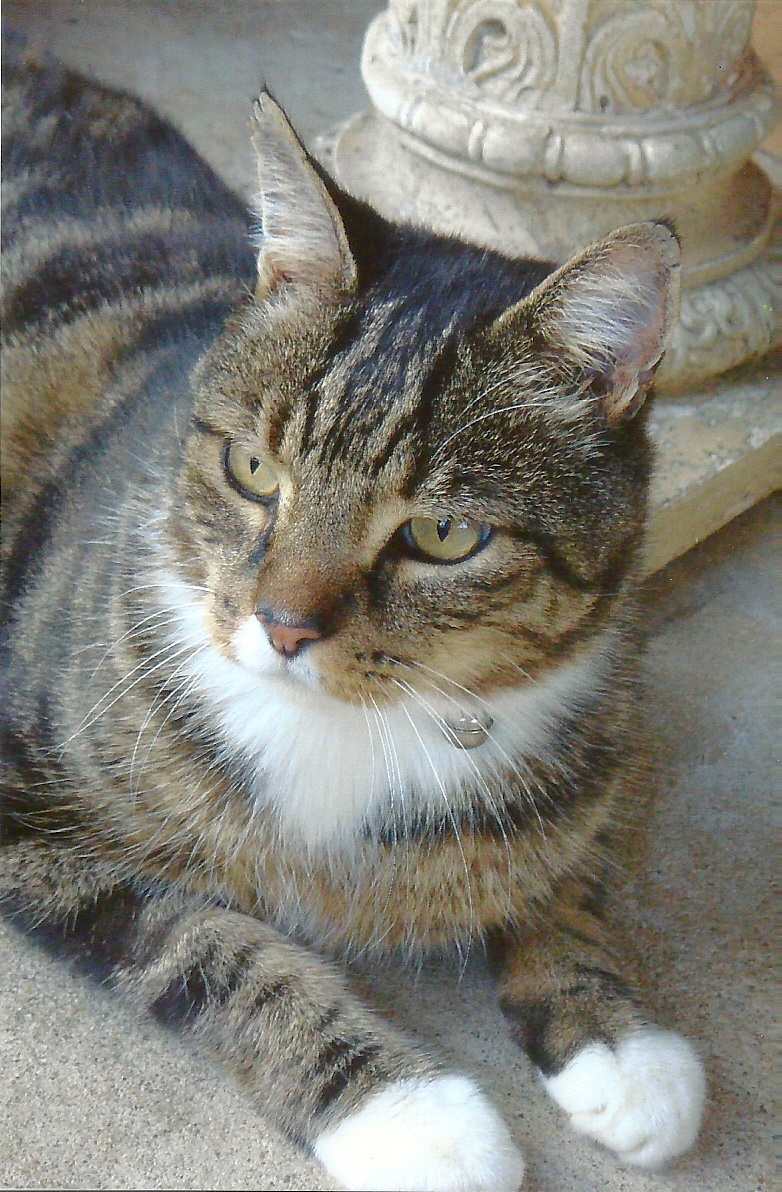 By Emma Pearse, Trainee Vet Nurse
By Emma Pearse, Trainee Vet Nurse
He’s not eating as much. He’s urinating in places other than his litter tray. He’s losing weight. Recently he keeps emptying his water bowl and tries to scavenge water from the sink, shower, and pool... What is happening???
“Tigga” is a 13 year old neutered male, domestic short-haired cat. His story started a little while ago – I was really worried about him and unsure what was going on. Initially I noticed that he was lethargic and looking shabby because he was no longer grooming himself properly. A little while later, he became wobbly in the back legs and looked like he was going to collapse. I checked for ticks but couldn’t find any... then that dreaded feeling came that maybe I would have to prepare to say good bye to my best friend.
I jumped in the car and went to my work at Hoof n Paws & Veresdale Equine Veterinary Services clinic.
I took him to see Dr Colleen, worried that he may have had kidney problems, but Tigga, being a difficult cat to handle, didn’t want to co-operate that day. I bought him back the next day for a blood test, which normally would be a relatively easy procedure, but with my Tigga, would require him to be under anaesthetic. I was feeling pretty confused and scared, I wanted to know what was wrong with him, but was worried that it was going to be something untreatable. I was also worried that if he was going to be any pain, I didn’t want him to have to deal with that at his ripe old age of 13yrs. I picked him up as soon as I could that day, and was pleased to discover that he had handled the anaesetic well. Now we just had to wait for the results.
I got the dreaded phone call from Dr Colleen later that afternoon. Tigga’s kidneys were fine, but my precious little man had Diabetes! I was sort of relieved that it was something we could treat, but worried about having to try and treat such a difficult cat. I knew a little about diabetes in humans but not much about the disease in cats.
So what is Feline Diabetes? Firstly, diabetes is most common in older and obese cats. Diabetes is due to the inadequate production of insulin by the beta cells in the pancreas or the inadequate response of the cells to the insulin. Insulin is a hormone that is released into the cells during the digestive conversion of proteins into glucose in the bloodstream. Most food that is ingested is broken down into glucose, a type of sugar in the blood and one of the body’s main sources of energy. Correct insulin function will assist the liver and muscles to take up glucose from the blood cells and convert it to energy. Without insulin, you get impaired glucose uptake by the tissue cells, which prevents the body from utilizing glucose. This causes elevated blood sugar levels, which is referred to as hyperglycaemia. As the cells are starved of glucose, they switch to using fat and protein as an energy source. This results in weight loss, due to the breakdown of body stores of fat and protein. In cats, excess glucose is eliminated by the kidneys, producing frequent urination. There is then a need to compensate for the increased urination by drinking unusual amounts of water. In a small number of diabetics, the nerves supplying the legs, particularly the hind legs, may be affected, causing a weakness and a classic sunken hocks stance. (Peripheral Neuropathy).
There are two types of diabetes that are seen in cats. They are type I and type II. Type I diabetic cats are insulin dependent and need to receive daily insulin injections because the beta cells of their pancreas are not making enough insulin. This is the most severe form of the disease. In type II diabetic cats, the cat’s pancreas may make enough insulin, but the cat’s body does not use it properly. This is the most common form to be diagnosed. Some of these cats will require insulin as well, but others will get by on oral drugs to control blood sugar levels. About 70% of all diabetic cats will require at least some insulin.
So now, after treating Tigga with insulin injections twice a day, twelve hours apart, for about 5 weeks, he is drinking less water, only urinating once to twice a night, putting the weight he lost back on and getting around more often. He is looking better and has started to groom himself again and is well on the road to being his normal old self. In the future he will need to have his blood sugar levels monitored every 3-6months. This ensures that the amount of insulin he gets each day is not too high or low and enables my vet do change doses accordingly. To do this Tigga needs to be in hospital for a day as blood sugar levels are checked every two hours. So far, he has co-operated with all this.
From this point, it is important that Tigga is closely monitored because long term management of diabetes comes with its own problems, including severe drops in sugar levels due to too much insulin or un-noticed remission in type II diabetes, or inappetance. Cats with low blood sugar will collapse, look weak and may have fits. Honey on gums can be good while Tigga is on his way to the vet for treatment.
Tigga’s presentation is a very common example of diabetes. His gender – neutered male - is the most common to get diabetes. It is important to ensure neutered cats remain within their ideal weight range to minimise their chances of contracting the disease. Now that Tigga is being treated and gaining weight again, I am much happier that my baby is living a comfortable, satisfying life again.









